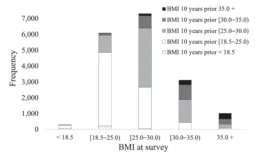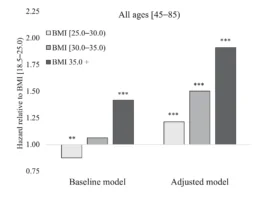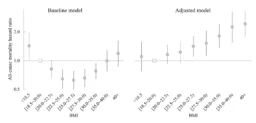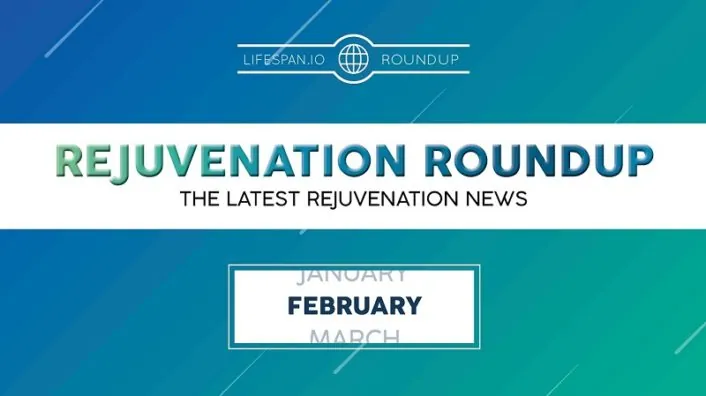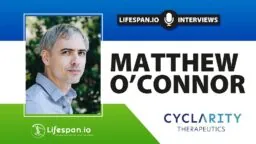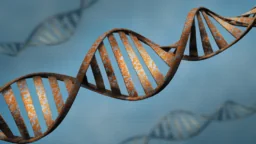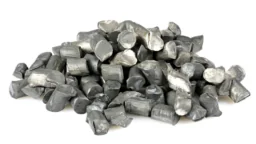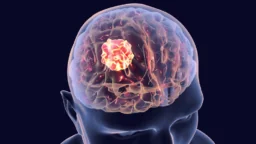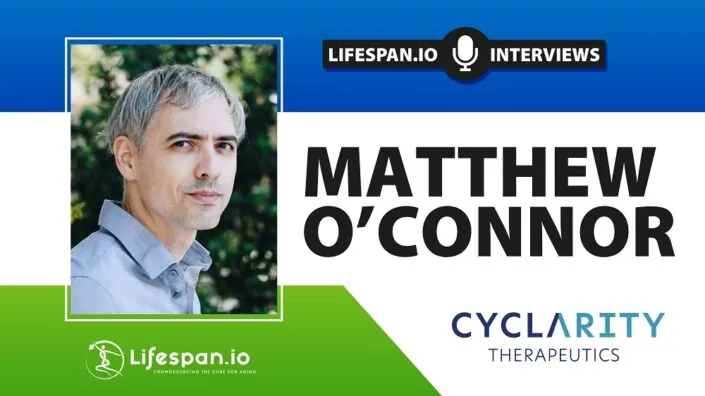Cyclarity Therapeutics is striving to make powerful treatments for cardiovascular disease and, most importantly, make them accessible and affordable. Their cutting-edge cyclodextrin technology targets atherosclerosis, aiming to eliminate the buildup of non-degradable oxidized cholesterol that gets stuck inside cells in the arterial walls.
The company has made great progress towards launching its cyclodextrin drug for the treatment of atherosclerosis, with human trials set to begin this year. Dr. Matthew ‘Oki’ O’Connor, CEO of Scientific Affairs at Cyclarity, shares insights about his company’s platform, its drug, and his thoughts about the current market.
For people who are not familiar with your work at home, could you tell us a little bit about yourself and your work?
My name’s Matthew O’Connor, my nickname is Okie, and I’m a biologist. I have a PhD in biochemistry, and I’ve been studying aging, and that’s why I went into science. I’ve worked on telomeres, muscle aging, stem cell aging, mitochondrial aging, and what we’re going to talk about today: toxic oxidized cholesterol and how to solve the problems it causes in relation to cardiovascular disease.
Previously, I was vice president of research at SENS Research Foundation. I was there for nine years before I spun out Underdog Pharmaceuticals, which is now Cyclarity Therapeutics, a little over three years ago.
You’re a bit of a Renaissance man, a little bit of telomeres, stem cells, mitochondria, now extracellular waste. Looks like you are trying to cover all the hallmarks of aging! Great, that’s what we need. Would you be able to give us a brief layman’s summary of what the company is actually doing?
Sure, the really brief summary is that we have a drug development platform that targets toxins that accumulate with age in different cells and tissues in the body. And we’ll talk a little bit more about our lead drug candidate molecule in a little bit. But that’s it in a nutshell.
Sounds good. I understand that you’ve developed a proprietary screening platform to help you develop your small molecules. Can you tell us a little bit about how that system works and how it’s paving the way for clinical trials?
Absolutely. The clinical trials are sort of the far end, that’s a bit far away from the screening platform side of things. We start with computational modeling of the type of drug that we are working on. The type of material that we work on are called cyclodextrins, and we create.a molecular version of those.
Then we mix them in the simulation with different drug targets, so we can have one drug and one drug target. We put them together in the simulation, they interact, and we take a bunch of measurements of them, which gives us some data. We can do that over and over and over again, and we can iterate on the drug and change it one atom at a time if we need to.
We can also take one drug and screen it against dozens or hundreds or potentially thousands of different targets. That can allow us to do many things at once, which means we can iterate and come up with new versions of drugs against a given target.
It can also allow us to look at what other targets a drug might hit. Could it have off-target effects on different things in your biology and your biochemistry that you wouldn’t want it to interact with? We can use our platform to see this.
We start at a low-resolution, fast, cheap screening method, and then get increasingly more detailed and more powerful with the simulations that we run until we’re getting to extremely high resolution simulations that take a lot of supercomputer computing time.
That gives extremely high-level information like actually measuring the predicted forces between the drug and the target. That’s the computer screening platform side of things, and then we have the automated bench level screening.
Once we have synthesized a drug candidate, we take it to the bench and run it through a similar panel. Here, we can screen a drug against many targets or vice versa, screen many different drugs against a few targets in an automated and fast way. That’s the platform in a nutshell.
Sounds great, and it’s really impressive how far computer modeling has come in even just the last five years. It’s really impressive how quickly drugs can now be screened in this day and age, impressive stuff. Speaking about drug candidates, could you tell us a little bit about your lead drug candidate?
Our lead drug candidate targets an oxidized cholesterol called 7-ketocholesterol that accumulates in various cells and tissues with age, and the main type of tissue that we are looking at is in the artery where, as I’m sure everyone knows, cholesterol is considered the bad guy that accumulates and causes plaque, the buildup inside of your arteries.
What a lot of people don’t know is that the most toxic and the most atherogenic is the oxidized cholesterol form. Atherosclerosis is the buildup of plaque inside of your arteries, which is formed by the accumulation of this oxidized cholesterol form.
Additionally, unlike cholesterol, which you absolutely need to survive, you don’t need any of this oxidized form. And so that’s our target. Our lead drug candidate can go into cells and tissues and even penetrate plaque and grab onto that oxidized cholesterol, pull it out and then float away with it, so you can safely excrete it.
Wow, that sounds great. It seems like this particular oxidized cholesterol molecule, 7-ketocholesterol, doesn’t have any beneficial biological function that science has managed to discern?
That’s right. yes, it doesn’t do anything useful. If I could wave a magic wand and make all of it disappear from your body, you wouldn’t miss it, and 7-ketocholesterol is the main form of oxidized cholesterol too.
You don’t actually intentionally produce any of it. You don’t have any enzymes in your body that make it on purpose. It’s just when you have an oxygen free radical that reacts randomly with cholesterol, more often than not, you end up with this 7-ketocholesterol version.
I wrote and published a whole review article about 7-ketocholesterol in 2020. I encourage your readers to look it up. It is a bit detailed, but it’s actually amazing, because it’s not implicated just in heart disease but actually anywhere you have cholesterol, which is everywhere. It can cause problems, and so there’s actually a lot of diseases, mostly diseases of aging that it’s implicated in.
So, it is useless and yet pretty dangerous stuff. Sounds like we need to get rid of that as soon as possible. Your cyclodextrin-based drugs approach is quite unique. There are very few similar cyclodextrin-based drugs around, and yours is different again from some of the few there are. In what ways do they differ?
You’re right. Cyclodextrins have been around for something like a hundred years, but they’ve been used mostly in basic chemistry and industrial materials manufacturing for most of their history.
They’re really interesting molecules, they’re circular carbohydrates and clever material scientists and chemists have come up with thousands of uses for them. You can make very strong materials out of them. You can make super-hard paint from them, and somebody in Japan even built a whole car out of only cyclodextrins.
They can be used to make really versatile materials, but in the last 20-25 years, there’s been a pivot towards trying to use them for medicine. What they’ve been used mainly for is as an excipient, which is a drug delivery vehicle.
There’s a couple of cyclodextrin products on the market that are extraordinarily safe, and what you can do is mix them with any drug that you want to deliver that won’t easily float through the bloodstream. When you mix it with these cyclodextrins, it can make them become more soluble, and so you can use them to deliver drugs.
That was actually part of the inspiration for the way that we designed our drug. That is to say, we studied how these other molecules that have gotten a blank-check approval by regulators to be mixed with basically any drug that’s invented; any drug manufacturer can just mix them with their drug and use it to deliver it.
We studied what made them so incredibly safe and mimicked those properties. We also studied how you could engineer a cyclodextrin to make it very potent for a specific target, in our case, oxidized cholesterol, and also what could make it very specific to that one target, which.most of the cyclodextrins that you can buy from the chemical catalog are not.
We studied all the cyclodextrins in the chemical catalog, and then we did all this computational modeling, and we figured out that the best way to grab onto our target was to dimerize it to basically take two cyclodextrin molecules, stick them together in the right configuration, and then modify it chemically in particular ways to give it the right shape in the binding cavity.
Then what it does is, it grabs it and then it eats a single molecule of its target, a bit like Pac-Man, then wraps around it, and the inside cavity forms a shape around the target that fits it. It can then bind it with extremely high affinity and specificity and float away with the 7-ketocholesterol.
That’s the magic of our technology, and that’s also the basic premise of our technology platform now. Anything that’s roughly the size of a cholesterol molecule or a bit bigger or a bit smaller, we can design a cyclodextrin to grab it and float away with it.
That really begs the question, obviously you’re focused on atherosclerosis and age related diseases here, but it sounds very flexible and could potentially be used for a variety of other diseases, right?
Yes, a variety of other diseases, and like you said, we’re mostly focused on the diseases of aging. but if you have a target that’s involved in a congenital disease, there’s no reason that we could not use it for that. Like I was saying, cyclodextrins are used as excipients, and other things like that, and there’s one cyclodextrin drug that’s on the market that’s basically an antidote for a paralytic.
There’s no reason that we couldn’t make more of those or make an antidote against a drug of abuse or something like that. There’s lots of potentially valuable uses for our technology, but right now, we’re pretty focused on atherosclerosis.
We certainly want to develop the other potentials of our technology or even better since we’re focused on the diseases of aging, partner with others who want to try to use our technology for other diseases, and do something collaboratively. If anybody out there listening thinks they might have other uses for our technology, hit me up and we’ll talk.
So, there you go; the door is open for collaboration which is always good. So you’ve chosen atherosclerosis as your target, could you perhaps speak a little bit about the market and the scale of the problem that atherosclerosis presents?
Imagine that most of your readers realize that it’s a huge problem and in fact pretty much any way that you cut it, it’s the number one cause of death on Earth. I think almost everyone knows someone who’s had heart problems, who’s had a heart attack, or who’s lost a loved one to heart attack or stroke.
What I think most people don’t realize is that atherosclerosis itself doesn’t kill anybody. What it does is, it causes heart attacks and strokes, and it causes respiratory failure. The majority of chronic obstructive pulmonary disease (COPD), which causes lung failure with age, is actually driven primarily by atherosclerosis because of the loss of blood flow to the lungs.
There’s been studies done by the big health organizations like the WHO and the Health and Human Services Department in the United States that have attempted to risk adjust diseases, and look at the primary contributors to them, and then assign percentages to them. When you do that, you end up seeing that like 60% or more of all heart attack, stroke, and COPD deaths are caused by those underlying causes: atherosclerosis. Then, when you go back and do the math on that, you end up with up to 50% of all deaths in the world are caused by atherosclerosis.
How big is the market? It’s trillions of dollars, it’s just unimaginably large because of what’s involved here. Obviously, we’re not saying that our first drug is going to be a multi-trillion dollar drug right out of the box. We’ll start with smaller indications and work our way up from there.
There’s a tremendous unmet need, and the heart failure field is really stagnated right now, particularly cardiovascular disease drugs, and while it’s great that today we have not just statins, but three different families of lipid lowering drugs, which all work well but they don’t actually cure anything. They lower your circulating LDL, the so-called bad cholesterol that you also need, which can slow down the accumulation of plaque, but it doesn’t reverse it. Our drug aims to reverse it.
That’s what our philosophy is. We are going after the damage that causes the diseases and disabilities of aging to get much more dramatic benefits when we actually implement them. That’s the overarching philosophy I bring to aging research: we’re not just trying to put band-aids on problems. We’re not trying to slow down the gradual decline, we’re actually trying to fix problems. In this case, clearing out the arteries to make them better again.
Very much a case of treating the cause or as near to it as possible rather than the symptoms. So now for the important question that many readers will want to know: How are things going progress wise on moving this to the clinic?
It’s going extremely well. We’re well into the process of preparing for clinical trials. We are building our clinical team. We’ve brought on board a noted expert in developing cardiovascular drugs, Dr. Noah Rosenberg, and are building a team around him to plan, initiate, and run the clinical trials. Importantly, this is going to start in months, not years.
We’re going to start clinical trials in 2023, and.we’re well along the path of getting ready for that. There’s a certain number of things that you need to do with a drug candidate to be ready for that, and you can put them into two basic categories.
First is safety testing your drug and the other is in the manufacturing process, and so we’re in the final stages of doing the safety testing. We are doing what’s called GLP: safety testing of our drug, ensuring good laboratory practice, and documenting all of that very carefully for the regulatory bodies.
Then we need to manufacture the actual version of the drug that will go into people. We’re making several kilograms of the final drug product right now, and that’s already begun. That’ll take a couple few more months and when that’s completed, that’ll be analyzed in every, which way that that can be thought of.
Then, all the data on both the manufacturing of the drug and the safety testing will be submitted to the regulatory body, at which point we ask for permission to initiate clinical trials. We’re well on the way towards the end of dotting all our I’s and crossing all our T’s, and then we’ll be able to start the clinical trials right away.
That’s very exciting stuff Indeed. Maybe even this year, we could be seeing some clinical trials going ahead. Speaking of regulations and regulatory bodies, I noticed that while you’re based in California you chose to initiate the trials in the UK. What was the reasoning behind moving it to the UK?
The reason we went to the UK was what is called the MHRA, which is the UK version of the FDA. A lot of people are afraid of the FDA and other regulators, but we set out right from the beginning wanting to maximize our interaction with the regulators so that we could learn as much as possible about what it is that they would want from us and so that we could smooth the way to the clinic.
The FDA is a little bit stingy with meetings, and so the typical path is you do a pre Investigational New Drug (IND) Meeting with the FDA somewhere between six months and two years before you’re going apply to for permission to launch an IND.
Typically, you have one meeting with the FDA and then you submit your application and that’s it; then, if your application fails, you’re in trouble. We wanted to get as many interactions as possible with the MHRA, and we know that the European and UK regulators talk to the FDA all the time and they try to be on the same page.
We figured we’d go back and forth and try to have two or three times as many meetings before we got to the final step. We started with a pre-meeting in the UK, where they told us we were too mature for the pre-meeting that we originally applied for and graduated us up to the next level right away.
We went in for this first meeting and it turned out that they loved our stuff. There was a new program that the MHRA had created called the innovative licensing and access pathway (ILAP) that companies could apply for before they were in clinical trials.
In the US, you can only apply for accelerated programs status after you’re in the clinical trials, but the UK had come up with this new program that anyone can apply for, and they encouraged us to do so. They said that we’d be a great candidate, so we applied for it and were immediately accepted. We were one of the first 10 companies accepted to the ILAP program in 2021.
That came with a lot of benefits for us. It came with a lot of extra advice, which is exactly what we were looking for in the first place. We get a lot of free advice from the MHRA and potentially downstream too.
When you’re in later-stage clinical trials, there’s sort of this adaptive approval process where you can start applying for reimbursement, meaning they can start paying us for our drug in proportion to how much benefit they calculate probabilistically that we’re giving to patients.
That means that if in our latest-stage clinical trials they see the data and they see the plaque going away, they will predict that before the final results are out, that it’s likely that we’re helping patients, and then the national healthcare system (NHS) will will start paying us for our drug, which is really beneficial for a new company.
There’s been a sort of all-or-nothing game that companies have been playing forever, since drug regulation was invented, where the company pays for a hundred percent of everything up until the day that the drug is approved, and then all of a sudden you’re collecting millions or billions of dollars in profits.
The idea of smoothing that out and making it a little bit more gradual is really attractive to us. It’s an exciting program and it’s great to be a part of it and blazing this trail. So that’s why we’re spearheading our efforts in the UK.
As you are working with the UK regulatory bodies, if your trial is successful in the UK, could you take that preexisting data from another regulatory body to the FDA or EMA?
Yes, we can use all the data. The Phase 1 clinical trial will be done solely in the UK. All of that data will be completely applicable in the other major markets. We’re designing our clinical trial in such a way that it will be completely acceptable to the FDA and to the EMA in Europe.
We will absolutely be able to go straight into Phase 2 clinical trials in the United States. Of course the FDA’s not going to say yes before they get the results, but the way that things are done in the UK will be completely acceptable to the way the FDA wants to see them done, and they’ll accept the data, assuming it all turns out well.
We won’t have to repeat anything. We won’t have to go country to country repeating the same human safety experiments that we already did in a different country. It’ll all harmonize with each other.
We’ve talked about what you’re doing now, but I wanted to ask you about something a bit different. You spent many years working at the nonprofit SENS Research Foundation until you and Mike Kope, who was originally the CEO there, launched Cyclarity. How have you personally found the change from working in a nonprofit to a biotech for-profit company?
Well, I knew that it would be different and intense and challenging, but there’s really no way to anticipate how intense and how fast-paced it is, or at least in our experience. It’s been just over three years, and we’ve gone from concept to clinic and it’ll be less than four years if all goes as planned, which I don’t think is a world record, but well ahead of average, and it’s just been a wild ride.
It’s super fast-paced, it’s a lot of pressure, and I’ve had to learn a thousand new things. Every day, it’s jumping into something and there’s a decision to be made that is really important. We are constantly learning new things about some regulation or some aspect of the technology development that I didn’t know anything about 10 minutes ago, and it’s just a case of diving in or finding the right consultant and tracking them down, then start implementing it, and it’s off to the next problem.
That’s not appealing for some people, and that’s probably too stressful for most, but I’m having the time of my life. Every day, I get up, I jump into the stuff, and it gets me up in the morning and keeps me going all day. Well, that and the caffeine!
It’s a blast and we’ve pulled together a team that was certainly different from an academic team. My background has been in the nonprofit space before this, and so I really emphasized hiring people with industry experience and I didn’t hire anybody like myself. I went out and tried to hire people with different experiences that could complement mine because there’s just so many things that you need to know and have to learn on the fly. And one person can’t do it all. You need a team, you need support, you need people who know the things that you don’t know.
Now we’ve got an amazing team. There are also two circles of team members too. We’ve got our internal team, who are full-time employees, and then we’ve got sort of a second orbit of like 50 to 100 consultants that we rely on to get all this stuff done. People from all around the world from places like China, India, Hungary, Spain, the UK and France and more. It’s a worldwide effort, and it’s really high energy and fast paced, and yes, I’m having a great time!
It sounds like it has been a real challenging but rewarding time and it’s really important to enjoy what you do as well. And on that note, I think that about wraps it up. Any final thoughts?
I really appreciate the support of lifespan.io, we’ve known each other for a long time, basically since your inception and so I appreciate the support of you and your readers. People can learn more on the Cyclarity website and on our social media pages, on Facebook, LinkedIn, Twitter and Instagram to keep up with what we’re doing.
We’ve got exciting things ahead and hopefully a second and third drug that we’ll be working on and talking about soon. It’s been a blast, and we really appreciate you and everyone over there who supports us.
Great, and as always with you Oki, you’ve ended it on a teaser, a second and a third drug on the way, we look forward to hearing more about that in the near future. We appreciate all the work you’ve done and taking the time to speak to us.
We would like to ask you a small favor. We are a non-profit foundation, and unlike some other organizations, we have no shareholders and no products to sell you. All our news and educational content is free for everyone to read, but it does mean that we rely on the help of people like you. Every contribution, no matter if it’s big or small, supports independent journalism and sustains our future.










